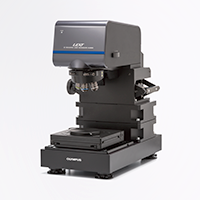
 Why testing crack formation in thin films matters in the automotive industry
Why testing crack formation in thin films matters in the automotive industry
In the latest white paper from Olympus, we look at the work of Dr. Megan Cordill from the University of Leoben (Austria), and her research into thin films on polymer substrates for flexible electronic applications.
Dr Cordill uses confocal laser scanning microscopy with Olympus’ LEXT imaging platform to analyse crack formation in flexible electronic devices.
Why does this matter in the automotive industry?Welding is carried out on large scales in many industries. An important task in automotive manufacturing is the testing of electronic parts for quality control – carried out as part of safety checks and to predict lifetime.
Car components are subjected to the same forces as flexible electronics, such as thermal expansion and bending and stretching due to vibrations while driving.
These forces can cause important safety concerns, for example the bending and stretching of car seat wiring has the potential to affect the acceleration sensor, or excessive vibration over time may cause airbag electronics to fail.
The innovative work of Dr. Cordill’s group has opened new doors for thinking about the design of flexible electronic devices.
Shedding light on the behaviour of these devices in more detail than ever before, this discovery has been possible through coupling in situ testing with the fast and easy-to-use high-resolution imaging platform of the Olympus LEXT.
Register below to download the white paper to discover how Olympus’ LEXT laser scanning microscope can be used to quickly and accurately test electronic parts under strain
[vfb id='4']Read the privacy policy































